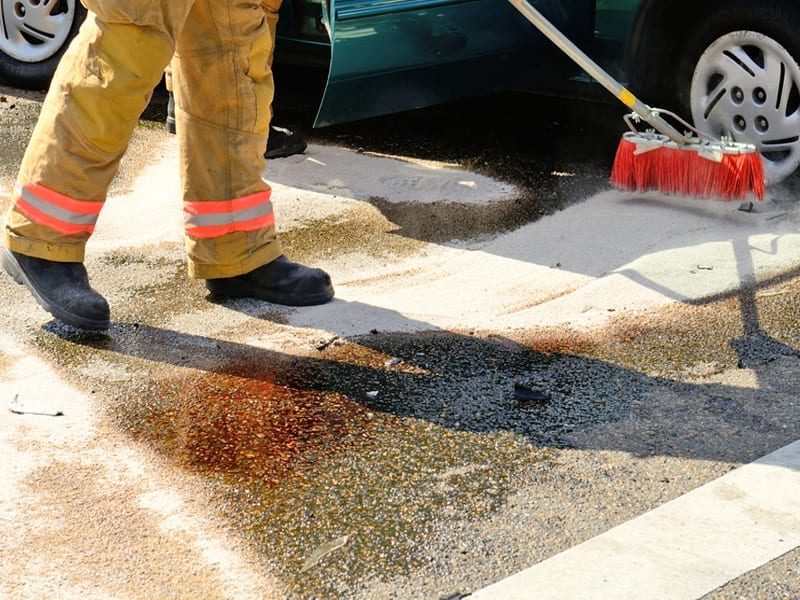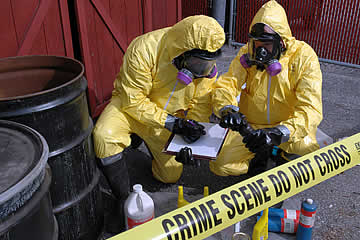Professional Biohazard Cleansing and Purification for Blood, Bodily Fluids, and Hazardous Materials
In the realm of biohazard cleansing and purification for blood, bodily fluids, and hazardous products, precision and know-how are vital. The prospective health threats connected with exposure to biohazards underscore the essential requirement for precise handling and comprehensive cleanup. Specialized training outfits experts with the knowledge and abilities required to address these harmful circumstances effectively. Nevertheless, it is not merely concerning cleaning up; the importance of utilizing proper purification techniques can not be overemphasized. As we navigate the detailed landscape of biohazard cleanup, recognizing the nuances of laws, compliance, and the customized equipment at play comes to be crucial in ensuring a detailed and safe purification process.
Health Threats of Biohazard Direct Exposure
Direct exposure to biohazards poses considerable health and wellness dangers that can cause extreme effects for communities and individuals alike. Biohazards include a large range of organic compounds, consisting of blood, physical liquids, mold and mildew, germs, infections, and various other possibly contagious materials. When individuals come into call with these biohazards, whether via crashes, incorrect handling, or ecological exposure, they face the threat of contracting severe illnesses or diseases.
Among the primary wellness risks connected with biohazard direct exposure is the transmission of transmittable illness. Bloodborne pathogens such as HIV, hepatitis B and C, and numerous germs can be present in biohazardous products, presenting a straight risk to human health. Breathing in air-borne biohazards like mold spores or entering into call with polluted surface areas can also bring about respiratory problems, allergic reactions, and various other negative health and wellness impacts.
In addition, biohazard exposure can have long-lasting health and wellness effects, with some diseases materializing years after the first contact (Blood Cleanup). For that reason, it is essential to prioritize correct biohazard cleansing and decontamination to mitigate these wellness risks and ensure the security of neighborhoods and people

Specialized Training for Biohazard Clean-up
When it involves dealing with biohazard clean-up successfully and safely, specialized training plays an essential duty in ensuring appropriate purification treatments are followed. Biohazard cleanup needs details knowledge and skills to efficiently alleviate threats associated with bloodborne pathogens, bodily fluids, and harmful products. Specialists learnt biohazard cleaning undergo rigorous instruction on how to safely manage, get rid of, and deal with biohazardous materials to avoid contamination and exposure.
Specialized training for biohazard clean-up covers a variety of necessary subjects, consisting of appropriate individual safety devices (PPE) usage, bloodborne microorganism understanding, decontamination techniques, and contaminated materials disposal protocols. Individuals educated in biohazard cleaning are outfitted with the required proficiency to assess contamination levels, recognize possible dangers, and carry out proper cleanup procedures in conformity with regulatory standards.
Continual training and education and learning are vital in the field of biohazard cleanup to remain upgraded on the most up to date decontamination technologies, safety and security methods, and guidelines. By investing in specialized training, biohazard cleanup specialists can successfully reply to emergency cleaning circumstances and safeguard both public wellness and the atmosphere.
Importance of Appropriate Decontamination Strategies
Using appropriate decontamination techniques is critical in biohazard cleanup to properly decrease and eliminate unsafe materials wellness dangers. Effective decontamination not just guarantees why not check here the elimination of visible traces of blood, physical fluids, and various other biohazards but additionally targets unnoticeable virus that may present serious health and wellness hazards if not effectively eliminated. By complying with rigorous decontamination methods, trained experts can dramatically decrease the threat of direct exposure to harmful bacteria, infections, and bacteria that might cause infections or diseases.
Correct decontamination methods include using specialized equipment and disinfectants that are especially made to neutralize biohazards efficiently. Thorough cleaning and sanitation of infected locations are necessary to protect against the spread of microorganisms and make sure a safe atmosphere for passengers. Furthermore, the right disposal of biohazardous waste adhering to decontamination procedures is vital in preventing contamination of various other surface areas or people.

Tools and Devices for Safe Cleaning
When dealing with blood, physical liquids, or harmful materials, biohazard cleaning specialists rely on specialized equipment to decrease exposure dangers and extensively decontaminate the afflicted location. Additionally, biohazard cleaning packages including anti-bacterials, absorbent materials, and biohazard bags are utilized to securely include and dispose of contaminated products.
Advanced cleansing devices like hospital-grade disinfectants, HEPA-filtered vacuums, and fogging machines are utilized to disinfect surface areas and remove biohazards efficiently. Specialized devices such as sharps containers and biohazard garbage disposal containers are utilized to safely manage sharp items and biohazardous waste materials. By using the appropriate equipment and tools, biohazard cleansing specialists can make certain an extensive clean-up procedure that focuses on security and decreases wellness threats for both employees and owners of the affected space.
Laws and Compliance in Biohazard Cleaning
Proper adherence to policies and compliance standards is critical in biohazard cleaning to ensure the safety of both personnel and the environment. Federal government firms such as OSHA (Occupational Safety and Health Administration) and the EPA (Environmental Protection Firm) have actually developed particular guidelines for biohazard cleanup treatments to decrease wellness dangers and environmental contamination. These regulations cover a series of elements including the handling, transportation, and disposal of biohazardous products, along with the needed training and protective equipment needed for workers associated with the cleanup procedure.
Biohazard cleaning companies have to remain current with these guidelines to ensure that their operations fulfill the needed safety criteria. Failure clean up biohazard absorbent to comply with these laws can lead to severe effects, including penalties, lawful action, and jeopardizing the health and wellness of individuals and the setting. By complying with stringent guidelines and compliance actions, biohazard cleaning firms can efficiently mitigate dangers and ensure a extensive and safe cleaning process for all celebrations involved.
Final Thought
To conclude, biohazard cleaning and purification require specialized training, appropriate strategies, and adherence to policies. Exposure to blood, bodily liquids, and hazardous materials postures significant health and wellness threats, making it essential to make use of the right devices and devices for secure cleanup. By complying with rigorous procedures and standards, specialists can effectively reduce the threats related to biohazard exposure and make sure the safety and security of both themselves and others.
As we browse the intricate landscape of biohazard cleanup, comprehending the subtleties of laws, compliance, and the specific tools at play comes to be necessary in ensuring a complete and secure purification procedure. (Blood Cleanup)
When it this contact form comes to taking care of biohazard cleaning efficiently and safely, specialized training plays a fundamental duty in guaranteeing correct decontamination treatments are complied with.Utilizing correct purification techniques is vital in biohazard clean-up to effectively decrease and remove unsafe products health risks. Additionally, biohazard cleansing packages consisting of anti-bacterials, absorptive materials, and biohazard bags are used to securely dispose and contain of infected products.
Government agencies such as OSHA (Occupational Security and Health And Wellness Administration) and the EPA (Environmental Defense Company) have developed certain guidelines for biohazard cleanup treatments to reduce health threats and environmental contamination.
Comments on “Specialist Blood Cleanup: Making Certain Safe and Thorough Purification”